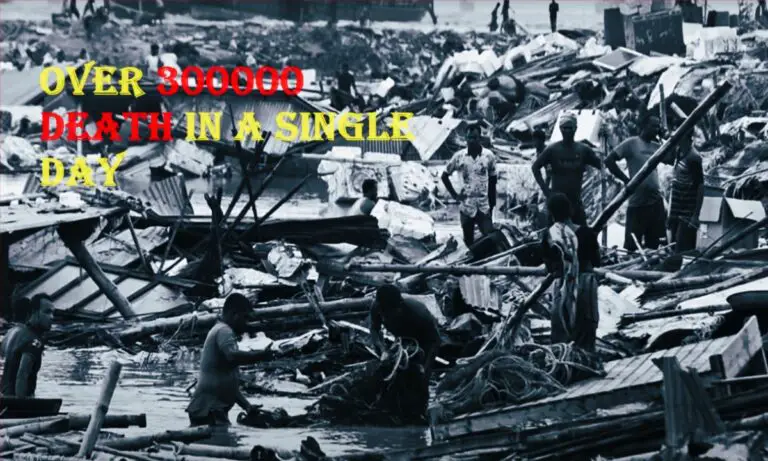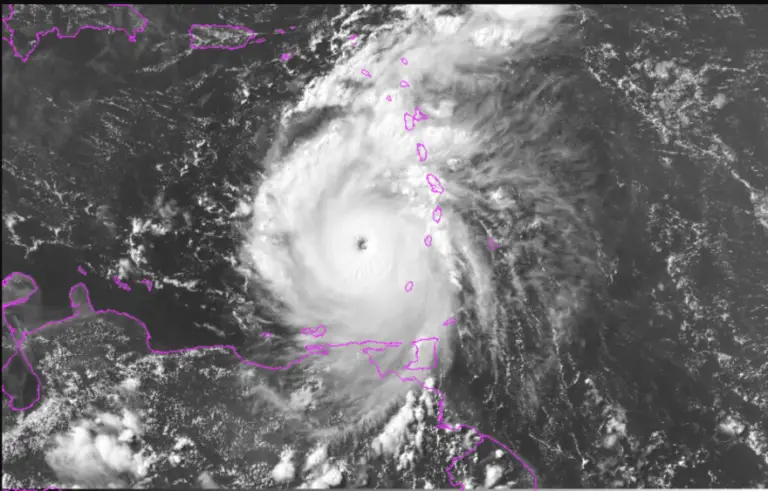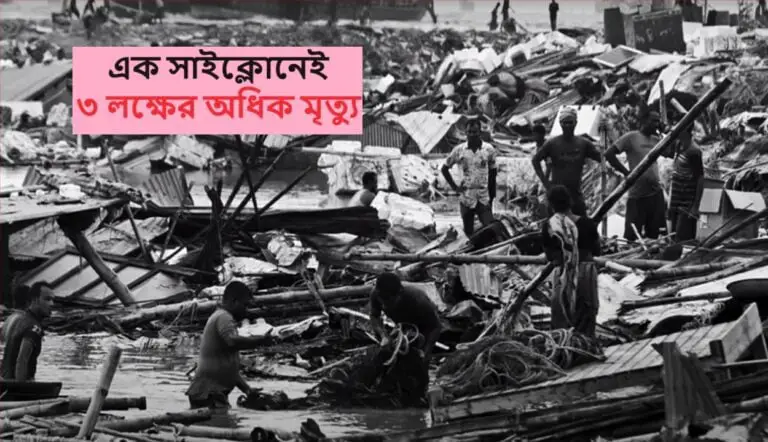Here’s a list of the Strongest Earthquakes of all time ever recorded.
12 Strongest Earthquakes based on Magnitude:
1. 1960 Valdivia earthquake (Chile): 9.5 magnitude.
This is the strongest earthquake ever recorded and struck south-central Chile on May 22, 1960. It triggered a massive tsunami that caused widespread devastation, killing over 2,000 people and displacing hundreds of thousands more. Causing it to be the Strongest earthquakes of all time, ever recorded.
[Image of 1960 Valdivia earthquake (Chile)]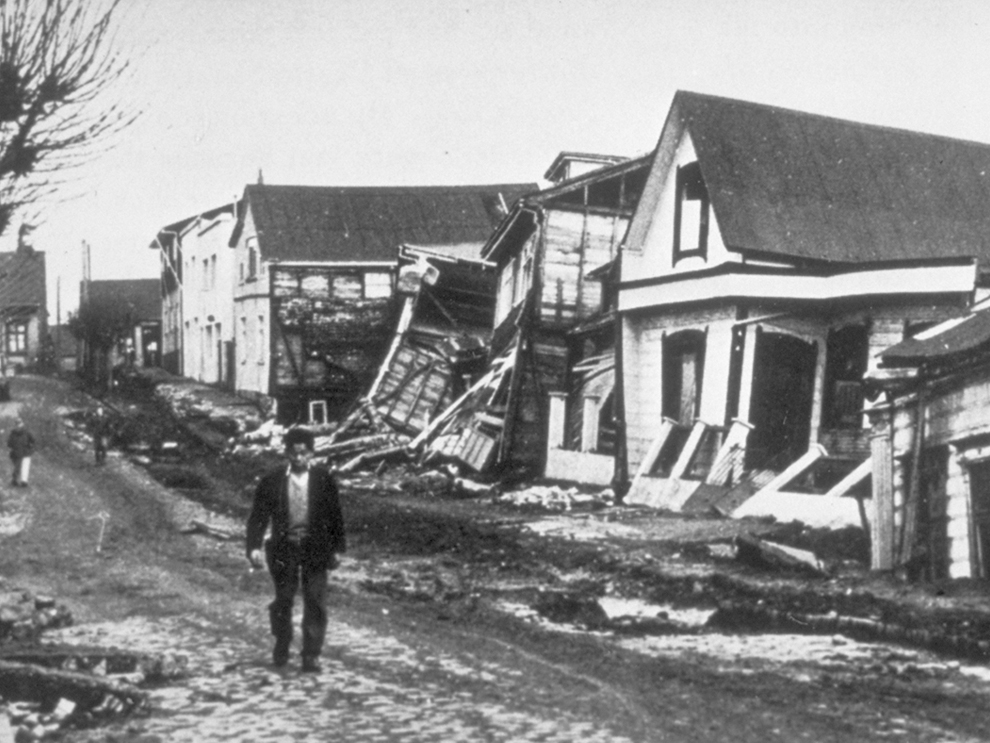
2. 1964 Prince William Sound earthquake (Alaska): 9.2 magnitude.
The Prince William Sound earthquake, occurring on March 28, 1964, with a magnitude of 9.2, stands as one of Alaska’s most significant seismic events. While less destructive than the Chilean earthquake of the same year, it still resulted in a considerable toll, with 128 lives lost and $311 million in damages attributed to the ensuing tsunami.
Felt primarily across Alaska and parts of Canada, the earthquake’s impact extended as far as Hawaii due to the generated tsunami. Anchorage, situated 120 km northwest of the epicenter, bore the brunt of the damage, enduring three minutes of intense shaking.
(Code 1: 10)
[Image of 1964 Prince William Sound earthquake (Alaska)]
3. 2004 Indian Ocean earthquake and tsunami: 9.1 magnitude.
This earthquake struck off the coast of Sumatra, Indonesia, on December 26, 2004. It triggered a devastating tsunami that swept across the Indian Ocean, killing over 230,000 people in 14 countries.
[Image of 2004 Indian Ocean earthquake and tsunami]
4. 2011 Tōhoku earthquake and tsunami (Japan): 9.0 magnitude.
This earthquake occurred on March 11, 2011, off the east coast of Sendai, Japan of Tohoku region. It triggered a massive tsunami that caused widespread damage and over 19,000 deaths. The earthquake also led to the Fukushima Daiichi nuclear disaster.
[Image of 2011 Tōhoku earthquake and tsunami (Japan)]![[Image of 2011 Tōhoku earthquake and tsunami (Japan)]](https://cdn.britannica.com/51/148651-050-30EBDF1C/Fishing-boat-wreckage-Ofunato-tsunami-city-Japan-March-11-2011.jpg)
5. 1952 Kamchatka earthquake (Russia): 9.0 magnitude.
This earthquake struck the Kamchatka Peninsula in Russia on November 4, 1952. It was the largest earthquake ever recorded on land and caused widespread damage, but no fatalities.
[Image of 1952 Kamchatka earthquake (Russia)]![[Image of 1952 Kamchatka earthquake (Russia)]](https://i0.wp.com/scientificinquirer.com/wp-content/uploads/2022/01/RIAN_archive_882887_Japan_earthquake_aftermath.jpg?resize=800%2C517&ssl=1)
6. 2010 Bio-Bio earthquake(Chile): 8.8 magnitude.
This earthquake struck off the coast of central Chile on February 27, 2010. This earthquake and subsequent tsunami killed at least 521 people, with 56 missing and 12,000 injured. More than 800,000 people were displaced with a total of 1.8M people affected across Chile, where damage was estimated at US$30 billion.
7. 2010 Maule earthquake (Chile): 8.8 magnitude.
This earthquake struck off the coast of central Chile on February 27, 2010. It triggered a tsunami that caused widespread damage and over 500 deaths.
[Image of 2010 Maule earthquake (Chile)]![[Image of 2010 Maule earthquake (Chile)]](https://upload.wikimedia.org/wikipedia/commons/4/49/2010_Chile_earthquake_-_Building_destroyed_in_Concepci%C3%B3n.jpg)
8.1906 Ecuador–Colombia earthquake: 8.8 magnitude.
This earthquake struck off the coast of Ecuador on March 31, 1906. The greatest damage from the tsunami occurred on the coast between Río Verde, Ecuador and Micay, Colombia. Estimates of the number of deaths caused by the tsunami vary between 500 and 1,500.
[Image of 1906 Ecuador earthquake]
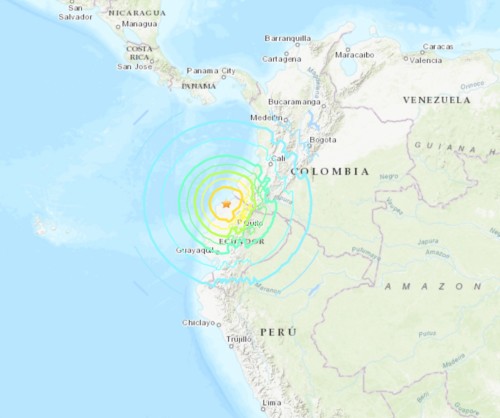
9. The Rat Islands Earthquake of 1965: 8.7 Magnitude.
On April 2, 1965, the Rat Islands, Alaska, experienced a powerful earthquake measuring 8.7 on the magnitude scale. While the earthquake itself caused considerable seismic activity, the most significant damage arose from the ensuing tsunami. Reports indicated that the tsunami reached heights of approximately 10 meters on Shemya Island, leading to widespread flooding on nearby Amchitka Island.
Property damage amounted to around US$10,000, yet fortunately, there were no reported deaths or injuries. This event serves as a reminder of the unpredictable and destructive potential of tsunamis triggered by seismic activity, underscoring the importance of preparedness in coastal regions prone to such natural phenomena.
10. 2005 Sumatra, Indonesia Earthquake: 8.6 Magnitude
On March 28, 2005, Sumatra, Indonesia, was struck by a powerful earthquake measuring 8.6 on the Richter scale. The quake, centered 205 kilometers northwest of Sibolga, Sumatra, with a depth of 30 kilometers, left a devastating impact in its wake. Tragically, 1,313 lives were lost, and over 400 individuals sustained injuries from the resulting tsunami, which reached as far as Sri Lanka.
This region, known for its geological volatility, has seen several significant seismic events, including the infamous 2004 Boxing Day Tsunami. The occurrence of three of the 15 largest recorded earthquakes in this area underscores its high level of geological activity, serving as a stark reminder of the constant threat posed by natural disasters.
(Code 2: 07)
11. 2012 Indian Ocean earthquakes: 8.6 and 8.2 magnitude.
These two earthquakes occurred off the coast of Sumatra, Indonesia, on April 11, 2012. They triggered tsunamis that caused damage and casualties, but the death toll was much lower than the 2004 earthquake due to improved warning systems.
![[Image of 2012 Indian Ocean earthquakes]](https://upload.wikimedia.org/wikipedia/commons/thumb/9/9e/USGS_map_of_the_2012_Indian_Ocean_Earthquake.jpg/512px-USGS_map_of_the_2012_Indian_Ocean_Earthquake.jpg)
12. The Assam-Tibet Earthquake of 1950: 8.6 Magnitude.
The Assam-Tibet earthquake struck on August 15, 1950, registering a magnitude of 8.6. Primarily centered in Assam, it caused extensive damage to buildings and triggered large landslides. The toll was severe, with 780 fatalities reported in eastern Tibet alone, impacting numerous villages and towns across Assam, China, Tibet, and India.
Notably, oscillations in lake levels were recorded as far as Norway. While dubbed the Assam Earthquake, the epicenter’s precise location remains debated, suggesting a potential origin in Tibet.
It’s important to note that the magnitude of Strongest earthquakes of all time is just one measure of an earthquake’s strength. Other factors, such as depth, location, and population density, can also play a role in the amount of damage and casualties caused.
Check Daily Earthquake Information here
Advertisements

